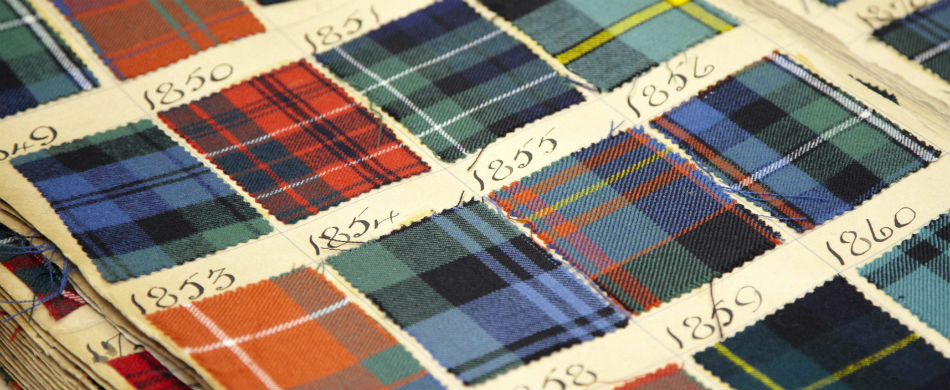The History of Tartan

While plaid flannel shirts have become a must-have for anyone who spends time in colder climates, tartan also boasts a storied history. In today’s lexicon, plaid has become almost an interchangeable term for the tartan, though the Scottish plaid is actually a tartan slung over the shoulder as an accessory to a kilt.
Tartan, on the other hand, is truly a fabric designed by tradition. Pre-dyed yarns are woven in a warp and weft fashion to create distinctive blocks of color, and a unique visual pattern when the differing colors intersect. The resulting fabric is visually pleasing, and the color and pattern carry with it deep history and pride.
While the tartan became known as an essential symbol of the Scottish Highlands, appearing around the 16th century, there is actually compelling evidence of the pattern's existence during the Hallstatt culture and ancient Celtic populations living in modern-day Austria during the 6th century B.C.
A tartan jacket worn by Bonnie Prince Charlie during the Jacobite rebellions
While many believe specific tartan patterns and colors indicated a certain clan membership, it’s more likely that since the fabric was hand woven and supplied locally, residents of remote areas simply wore what fabric was available to them, dyed with whatever their supplier had on hand (often natural vegetable dyes).
During the 1700’s, tartan, specifically “Black Watch Plaid” was adopted as the military uniform for the Royal Highland Regiment, a Scottish military force. In an effort to quell Scottish rebellion in the highlands after the defeat of the Jacobite army in the battle of Culloden in 1746, tartans were banned by the government in London.
It’s nowadays unthinkable that such an iconic symbol would be banned, but that ban lasted nearly 40 years, and following the repeal of the Dress Act, the tartan became not just the defining dress of the highlands, but the symbolic dress of the entire nation of Scotland. Its popularity exploded, and the 1800s saw the rise of the clan tartan and an etiquette of when and how to wear them, as often dictated by the royal crown.
Its popularity has since spread around the world - today nearly every region of Canada and 19 US states have their own official tartan, as do some colleges and universities. The Burberry check has become one of the most famous and recognizable tartans anywhere in the world. There are estimated to be up to 7,000 unique tartans registered in the Scottish Register of tartans, and these are classified into four different types depending on the dye used on the yarn and the vibrancy of the resulting pattern: modern, ancient, muted or weathered.
We’ve always loved wool flannel for it’s softness and durability, wearing in over the years for an even softer hand feel. When we thought of a piece we’d reach for the most in a fall closet, our Touring Flannel in a unique Alps & Meters tartan was a no-brainer.
When choosing a tartan pattern, we searched intently for patterns that inspired us to travel to the mountains, settling on rich blues and greens that remind us of alpine fir trees and deep blue high-mountain lakes. We settled on two tartans from Milior, a century old mill in Prato, Italy. Upgrading the classic wool flannel with rich Merino and four way stretch waxed canvas panels for added durability, this piece is sure to become a three season staple for years if not decades to come.






